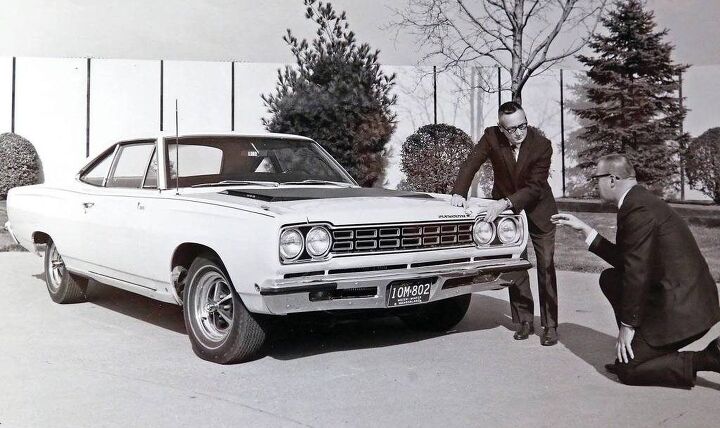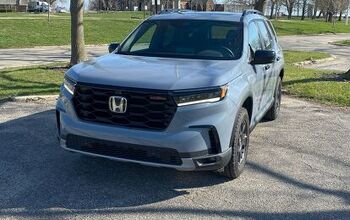In Memoriam: Jack Smith, a Mopar Muscle Car Maestro

By 1966, muscle cars were hitting peak stride. But some argued they had become too expensive and strayed too far from the original concept. As performance models had grown in displacement and technology, some crossed into premium pricing territory. Pontiac’s GTO, for example, could easily exceed $4,000 with a handful of options when the average cost of an American automobile was closer to $2,750.
Enter Jack Smith.
Plymouth had fallen into the pricing pitfall like most other manufacturers. Smith, who owned a souped-up Belvedere II, had recently been promoted to head of the company’s mid-sized car planning division. He wagered the public might enjoy a car like his and Plymouth introduced the GTX in 1967 to compete with the GTO. But it was still too expensive, especially for a budget brand like Plymouth, and garnered a lukewarm sales response — which gave Jack an idea.
With muscle cars getting progressively more costly, Smith figured the best solution was to come up with something affordable and fast. Chrysler’s then vice president of sales and marketing, Bob Anderson, already wanted Smith to come up with something to attract the youth market. This was encouraged by a letter from Brock Yates suggesting a stripped-down midsize two-door stuffed with a larger engine.
Smith’s goal was to build a 15-second car with over 300 horsepower that could be sold for less than $3,000. Going back to the Belvedere for inspiration, he cobbled an example together using police-spec components and leftovers from the GTX. The name for the vehicle came while his assistant, Gordon Cherry, was watching cartoons with this children.
Smith secured the rights to use the Road Runner image from Warner Brothers for $50,000, much to the chagrin of executive vice president of Chrysler Dick Macadam, and spent another $10,000 designing the car’s iconic horn. Smith estimated the remaining tooling costs for the Road Runner was under $500.
The entire car took only two months to develop and was an immediate sales hit.
In 1968, you could purchase a Plymouth Road Runner with a 335-horsepower 383-cubic inch V8 for roughly $2,800. That’s the modern cash equivalent of a base Chevrolet Malibu that’s able to outrun a mid-tier Camaro.
Of course, for an extra $714 you could have the Plymouth equipped with the 426 Hemi, an improved suspension, and the standard Hurst four-speed — making it just about the fastest thing on four wheels. But four wheels and an engine was about all you got for your money. While the Road Runner was a performance miracle in its day, it was almost laughably barebones. Some early models didn’t even have carpeting.
That didn’t hurt sales, though. Plymouth sold around 40,000 Road Runners in its first year and doubled that volume in 1969.
Hoping to remain on a roll with the youth market, Smith later developed flowered and paisley “mod tops” for Chrysler vehicles — pushing Mopar roofs and interiors into an era of maximum grooviness. Unfortunately, they didn’t attract the same widespread praise as the Hemi on a budget and were a short-lived niche option on Chrysler’s cars.
Jack retired from Chrysler in 1980 after serving as the Chief Engineer of Vehicle Emissions and Fuel Economy Planning. In retirement, he joined the development team for the Chrysler Technology Center and became a regular fixture at car shows in Southeastern Michigan.
We were tipped off that John “Jack” L. Smith passed away last Friday at the age of 94. As a major contributor to the funky persona of mid-century Mopar and staple at the Woodward Dream Cruise, he will be missed.
[Source: Allpar] [Images: Fiat Chrysler]

A staunch consumer advocate tracking industry trends and regulation. Before joining TTAC, Matt spent a decade working for marketing and research firms based in NYC. Clients included several of the world’s largest automakers, global tire brands, and aftermarket part suppliers. Dissatisfied with the corporate world and resentful of having to wear suits everyday, he pivoted to writing about cars. Since then, that man has become an ardent supporter of the right-to-repair movement, been interviewed on the auto industry by national radio broadcasts, driven more rental cars than anyone ever should, participated in amateur rallying events, and received the requisite minimum training as sanctioned by the SCCA. Handy with a wrench, Matt grew up surrounded by Detroit auto workers and managed to get a pizza delivery job before he was legally eligible. He later found himself driving box trucks through Manhattan, guaranteeing future sympathy for actual truckers. He continues to conduct research pertaining to the automotive sector as an independent contractor and has since moved back to his native Michigan, closer to where the cars are born. A contrarian, Matt claims to prefer understeer — stating that front and all-wheel drive vehicles cater best to his driving style.
More by Matt Posky
Latest Car Reviews
Read moreLatest Product Reviews
Read moreRecent Comments
- MaintenanceCosts Nobody here seems to acknowledge that there are multiple use cases for cars.Some people spend all their time driving all over the country and need every mile and minute of time savings. ICE cars are better for them right now.Some people only drive locally and fly when they travel. For them, there's probably a range number that works, and they don't really need more. For the uses for which we use our EV, that would be around 150 miles. The other thing about a low range requirement is it can make 120V charging viable. If you don't drive more than an average of about 40 miles/day, you can probably get enough electrons through a wall outlet. We spent over two years charging our Bolt only through 120V, while our house was getting rebuilt, and never had an issue.Those are extremes. There are all sorts of use cases in between, which probably represent the majority of drivers. For some users, what's needed is more range. But I think for most users, what's needed is better charging. Retrofit apartment garages like Tim's with 240V outlets at every spot. Install more L3 chargers in supermarket parking lots and alongside gas stations. Make chargers that work like Tesla Superchargers as ubiquitous as gas stations, and EV charging will not be an issue for most users.
- MaintenanceCosts I don't have an opinion on whether any one plant unionizing is the right answer, but the employees sure need to have the right to organize. Unions or the credible threat of unionization are the only thing, history has proven, that can keep employers honest. Without it, we've seen over and over, the employers have complete power over the workers and feel free to exploit the workers however they see fit. (And don't tell me "oh, the workers can just leave" - in an oligopolistic industry, working conditions quickly converge, and there's not another employer right around the corner.)
- Kjhkjlhkjhkljh kljhjkhjklhkjh [h3]Wake me up when it is a 1989 635Csi with a M88/3[/h3]
- BrandX "I can charge using the 240V outlets, sure, but it’s slow."No it's not. That's what all home chargers use - 240V.
- Jalop1991 does the odometer represent itself in an analog fashion? Will the numbers roll slowly and stop wherever, or do they just blink to the next number like any old boring modern car?


































Comments
Join the conversation
When I was a teenager my uncle, a true Mopar nut, restored a '68 Road Runner. It had a 440 that he had completely rebuilt, I don't even know how much power it was making, but he took it to the Mopar Nationals one year and someone offered him 10 grand for just the engine. These days he has a '69 Barracuda, he and my grandfather share a '73 Barracuda, and the in-progress shell of a '70 Challenger hangs on a rotisserie in his barn. It's no wonder I couldn't get Mopars out of my blood if I tried.
There were two RRs in my small town 68 or 69. Both had the 426 in them - one was the bright orange, the other was purple. They were amongst my favorite cars at the time. Was this the first year Chrysler did the bold colors - Grabber Green, yellow, orange and purple? My dad had a 66 Coronet 500 with a 383 Hemi which I thought was quite cool. Someone mentioned the GTO earlier in the discussion. My best friend in high school had an "unmarked" version of the 69 Judge. Instead of orange it was red with a black vinyl top - no Judge badging of any sort that I can remember, Ram Air 400. It had the hood mounted tach which failed to work after a time. He blew the engine in it through what I felt was abuse. He'd do a fast acceleration from a stop and with every shift it would sound like the differential was slamming into the floor board. He got the insurance to pay for a new engine and put in a 455. He blew that engine within about 4 months. He then got a used HP interceptor - a Plymouth with a 440 in it. Don't think he ever got that one up and running that I recall as it needed work.